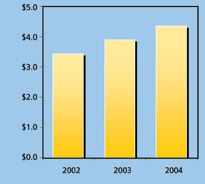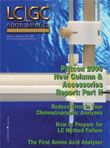Market Profile: Life Science Research
Without a doubt, life science technologies are providing valuable information and have become the core that discovery relies upon. Life science instruments are used predominantly by four industrial segments, which include academia, biotechnology, government, and pharmaceutical research labs. Due to the amount of money being spent, these industrial segments are under pressure to deliver exciting new discoveries.
Without a doubt, life science technologies are providing valuable information and have become the core that discovery relies upon. Life science instruments are used predominantly by four industrial segments, which include academia, biotechnology, government, and pharmaceutical research labs. Due to the amount of money being spent, these industrial segments are under pressure to deliver exciting new discoveries.
While life science or discovery research was separated by genomic and proteomic applications, the dividing line between the fields is beginning to fade. Instead, researchers are integrating the two fields and adding another level of difficulty by taking on the challenges of systems biology. Researchers are broadening their focus to gain a comprehensive understanding of biological systems and are communicating with colleagues across different technology platforms. This integrated approach is correlating genetic data with phenotypes of whole organisms, essentially creating a map between the points at the molecular biology and cellular level, and thus providing a true understanding of life and disease.

Worldwide Market for Protein and Analysis in Life Science Research
Systems biology is pushing the boundaries of throughput and performance for bioinstrumentation technologies, especially for chromatography and mass spectrometry, as well as cell analysis and high content screening. Information is being generated at a phenomenal rate and methods to analyze the data are in high demand. The overall demand for protein and cell analysis for life science research applications accounted for nearly $4.5 billion in 2004, with 12â15% growth over the last few years.
The foregoing data was extracted from Strategic Directions International Inc. Market Analysis and Perspectives (MAP) report titled, “Life Science Instrumentation: Supporting Systems Biology in Integrating Genomics, Proteomics and Drug Discovery.” For more information, contact Glenn Cudiamat, Vice President of Research Services, Strategic Directions International, Inc., 6242 Westchester Parkway, Suite 100, Los Angeles, CA 90045; tel. (310) 641-4982, fax (310) 641-8851.
cudiamat@strategic-directions.comhttp://www.strategic-directions.com~
Top Execs from Agilent, Waters, and Bruker Take the Stage at J.P. Morgan Healthcare Conference
January 16th 2025The 43rd Annual Healthcare J.P. Morgan Healthcare Conference kicked off in San Francisco earlier this week. Here’s what top executives from Agilent, Bruker, and Waters, discussed during the event.








